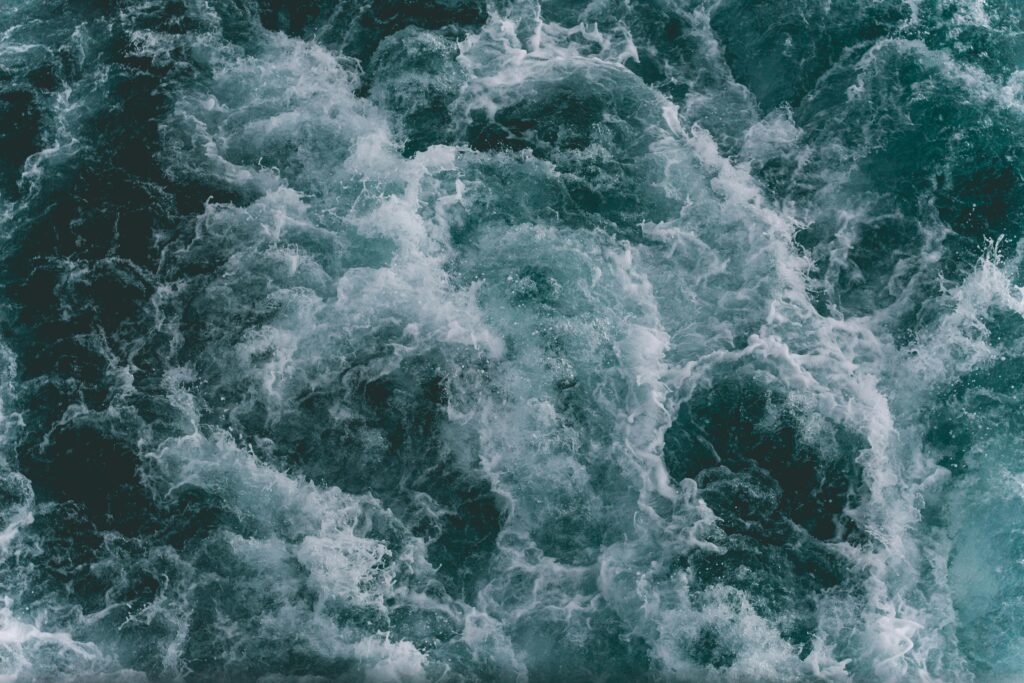I listen to a sound machine to fall asleep and crashing waves is one of my go-to sounds. As a lie there picturing a beach scene I inevitably envision a classic sandy beach with deep blue water full of soothing waves breaking on the shore. Except, as some point the blue of the ocean turns into the white crest of the waves – how does that sudden color change happen?

The white foam or froth on the tops of waves is caused by a phenomenon called “wave breaking” or “wave turbulence.” When a wave approaches shallow water, the bottom part of the wave slows down due to friction with the sea floor, while the top part continues moving at a faster pace. This discrepancy in speed causes the wave to steepen and eventually collapse forward, creating a turbulent mass of air and water.
As the wave breaks, air is mixed with the water, causing bubbles and froth to form on the surface. These bubbles full of air absorb less light than water, causing the light hitting the bubbles to scatter and create the white appearance known as “whitecaps” on the crests of the waves.
But why doesn’t every wave in the ocean have whitecaps?

The presence of whitecaps is influenced by factors such as wind speed, the steepness of the waves, and the consistency of the water surface. In windy conditions or during storms, waves tend to break more frequently, resulting in more pronounced whitecaps. The presence of impurities or organic matter in the water can also contribute to the visibility of whitecaps. These can include natural surfactants made by marine organisms, or pollution from man-made sources.
We don’t like to think about it while we are relaxing ocean-side on our well-deserved vacations, but the ocean is both bathroom and graveyard to many marine animals. Dead plants, algal blooms, shed fish scales, and whale poop are all floating around out there, contributing to the pool of “natural surfactants”. This plant and animal derived “organic matter” helps form longer-lasting bubbles that tend to aggregate along the shore in the form of sea foam.

Now you have some fun, disconcerting things to think about as you sit in your cubicle fantasizing about swimming through a white-capped ocean or romantically walking hand-in-hand through some sea foam on your next vacation.
To learn more about waves, check out https://en.wikipedia.org/wiki/Wind_wave
To learn more about sea foam, check out https://en.wikipedia.org/wiki/Sea_foam

